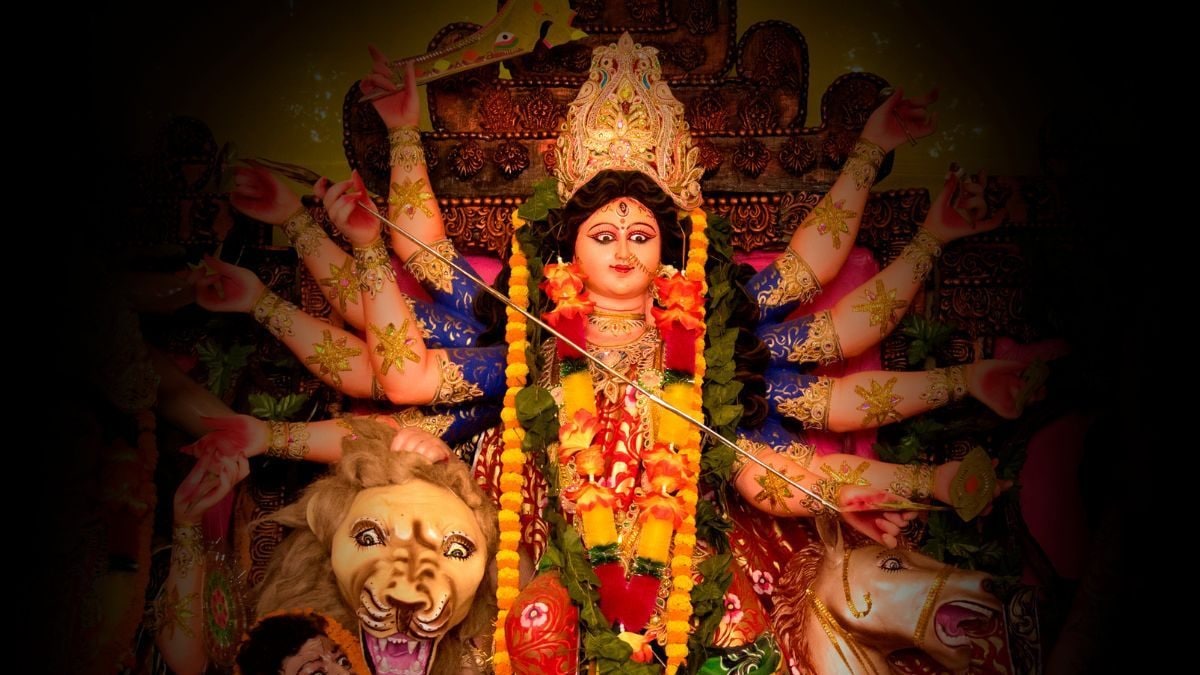Chaitra Navratri 2024: Why Kalash Sthapna Should Be Done In Abhijit Muhurat

Abhijit Muhurat will last from 11:50 am to 12:50 pm on April 9.
Abhijit Muhurat is the 8th Muhurat out of 15 Muhurats which prevail between the sunrise and the sunset.
The auspicious nine-day Hindu festival of Chaitra Navratri will start on April 9 as per the Drik Panchang and devotees will worship Goddess Durga and her nine divine forms during this festival. On the last day, devotees celebrate Ram Navami which marks the birth of Lord Rama.
In an interaction with News18 Hindi, Pandit Manotpal Jha from Purnia said that Kalash Sthapna should be done on April 9 from 06:02 am to 12:30 pm. As per the astrological beliefs, in Kalash Sthapna, the metal pot or Kalash represents various things. It is considered a container of fertility- the earth and the womb are known for nurturing life. Pandit Manotpal said that it would be even better if the Kalash Sthapana is performed in the Abhijit Muhurat from 11:50 am to 12:50 pm as installing the Kalash during this period is considered lucky. Abhijit Muhurat is the 8th Muhurat out of 15 Muhurats which prevail between the sunrise and the sunset.
In the Kalash Sthapna, many other things are also used like the mango leaves, coconut, etc. The mango leaves are considered to represent the Kama, the god of love, which symbolises the pleasure aspect of fertility. The coconut represents prosperity and power and it is said that the Kalash Sthapana brings good luck and positivity, and Navratri is incomplete without it.
According to the expert, there is going to be a special omen this year on Chaitra Navratri, because as per the beliefs, Goddess Durga is believed to ascend on the earth on a horse. Due to this phenomenon, this year will be considered very fruitful for the devotees, especially the farmers who will get a thriving yield from their crops.
During the 9 days of Chaitra Navratri, nine forms of Maa Durga will be worshipped by Hindu devotees. They are – Maa Shailputri, Maa Brahmacharini, Maa Chandraghanta, Maa Kushmanda, Skanda Mata, Maa Katyayani, Maa Kaalratri, Maa Mahagauri and Maa Siddhidatri. During this time, the devotees are expected to avoid non-vegetarian food, onion, garlic, etc. Moreover, during Navratri vrat, individuals also restrict their intake of grains and pulses and opt for ingredients like buckwheat flour, singhara atta, sama rice, and sendha namak or fasting salts.

Atul Tiwari is a seasoned journalist at Mumbai Times, specializing in city news, culture, and human-interest stories. With a knack for uncovering compelling narratives, Atul brings Mumbai’s vibrant spirit to life through his writing.





